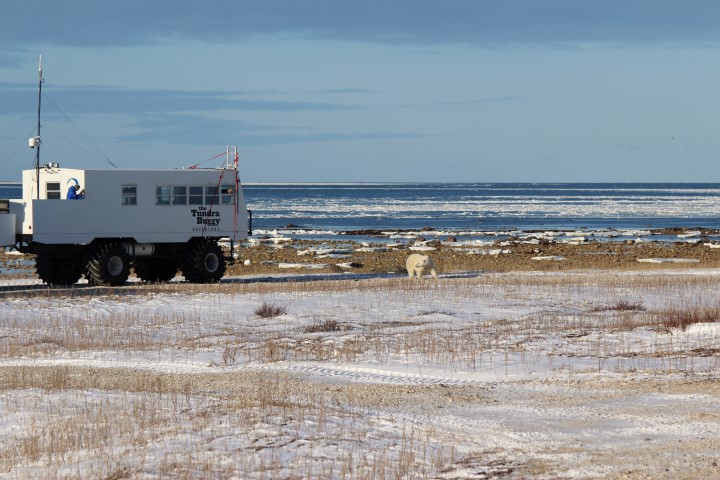
When bears come to town
The temperatures and winds are dropping nicely this morning. New slush ice is quickly forming again along the shores of the Bay as I sip my coffee and quickly check my email (yes- even in the far north and miles from any town, we have internet!).
One email is an update from our research partners at the University of Alberta. WWF has funded polar bear research through UAB for many years in Canada. Our conservation partners and members allow us to add critical funds that help make larger research projects whole or that add potential for graduate student involvement- training the polar bear researchers and mangers of tomorrow.
For those of you who follow our Polar bear Tracker site, the data from the West Hudson Bay comes from this partnership. The bears we are tracking in this region are almost all hanging out around Churchill now. While this is natural for the bears, and great for bear viewing, it poses unique issues for the town of Churchill. Issues shared by communities across the Arctic.
Polar bears gather around Churchill. Explore our polar bear tracker:
As many of you will have read or heard by now, we had an unfortunate polar bear incident in the town of Churchill just last week. A woman walking home early in the morning hours was surprised, attacked, and injured by a bear that had wandered undetected into town. Fortunately for her, a local Métis elder and lifetime resident heard her calls for help and came to her aid with only an aluminum snow shovel in hand. His actions saved her life, but he was severely wounded in the process. Other residents and Manitoba Conservation officers quickly responded and the bear had to be put down. Both injured people are recovering well in hospital. This marked the third human injury this year and the first since 2008. Given that, for much of the summer and fall, bears and people here are equal in number- the safety record in Churchill is still impressive.
Manitoba makes a significant investment of time and resources with their world class Polar Bear Alert program. Up here, the Provincial government pays full time professional conservation officers to patrol town during the season bears are onshore. They also operate a temporary holding facility that allows them a rare option to hold bears whose curiosity and lack of fear have led them to trouble within what’s called Zone 1- the core area of Churchill proper. Bears can be held here for up to 30 days before being released back to the wild and hopefully a little bit wiser.
Other communities are approaching this challenge with ingenuity but often lacking adequate resources. WWF is working with governments and select communities to pilot education, outreach, and deterrence programs. We are looking to share techniques used from other species to reduce conflict and to share best practices across regions through workshops and direct support of the Polar Bear Range States Conflict Working Group. From grants to start local patrol programs, to sponsoring field “classrooms” on electric fence construction, to supporting the development of a global database to track incidents- WWF is leading efforts to make sure communities and polar bears can be safe as we head into a less certain future.
Learn more about WWF’s work on human / polar bear conflict.
